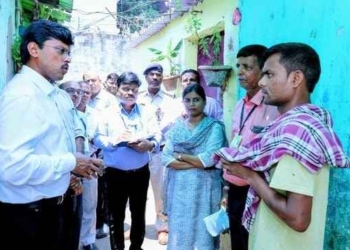The success of India-made weapons and equipment during Operation Sindoor against Pakistan has boosted the morale of the Indian defense industry. The Central Government said in the ‘Operation Sindoor: Uday Uday, Self -Innovation Uday in National Security’ released on 14 May 2025, how the Indian air defense system killed Turki and China -made drones and missiles from Pakistan in the air. According to the report, Pakistan attacked India with the Chinese-made PL-15 missiles, Turki origin UAV ‘Yiha’ on the intervening night of 9-10 May. The aim of Pakistan was to break India’s air defense system. But India’s especially DRDO -built Akash missile system played an important role in stopping the attack.
According to the report, India established a better synergy between the Navy and the Air Force through the Integrated Air Command and Control System of the Air Force (IACCS). The government said that Pakistani drone attacks were also thwarted with the help of Akash as well as strong systems like Pichora, OSA-AK and LLAD (low-level air defense) guns.
Former DRDO scientist Prahlad Rama Rao, called ‘Janak’ of Akash Missile, said that after this success, many people congratulated him. It took about 15 years to build the Akash Air Defense System. The system was successful in its combat test in Operation Sindoor. According to Rama Rao, “The speed of other missiles decreases after some time, but the speed of the sky is always stable.” 12 missiles can be launched simultaneously through the radar installed in it. ‘
Abhinandan: Rajnath Singh reached Bhuj Airbase
According to the report, on May 9, in response to Pakistan’s drone attacks, India stalled the Pakistani air defense radar system equipped with Chinese technology in Islamabad. The next day Pakistan tried to attack a missile attack, but the Indian security system killed him in the air. India then targeted Pakistan’s 11 airbase.
Defense Minister Rajnath Singh, who arrived at Bhuj airbase in Gujarat after Operation Sindoor, indicated that the indigenous BrahMos missile was used in retaliation. However, it was not officially confirmed by the government. Rajnath Singh said, “Pakistan is now accepting the power of BrahMos missile. There is an old saying in our country, ‘Made in India BrahMos showed Pakistan’s light even in the dark of night.’
The BrahMos missiles are jointly designed and manufactured by DRDO and Russia’s NPO Mashinosroenia in India.
This time drones have also proved to be effective. In 2021, India started giving priority to the drone war. The Ministry of Civil Aviation allocated Rs 120 crore to promote drone manufacturing, which led to a jump in domestic production. The Drone Federation of India (DFI), which represents more than 550 drones companies, aim to make India a global drone hub by 2030.
Desi weapons threat
India’s defense budget has also increased. It has reached Rs 6.21 lakh crore in 2024-25 as compared to the defense budget of Rs 2.53 lakh crore in 2013-14. India’s domestic defense production in 2023-24 stood at Rs 1.27 lakh crore, which is an increase of about 174 per cent from Rs 46,429 crore in 2014-15. The government aims to increase it to Rs 3 lakh crore by 2029. Defense exports have also increased. It has increased from 1,941 crore to Rs 21,083 crore in 2023-24 in 2014-15, which is an annual growth of 32.5 per cent. It has reached Rs 88,319 crore in 2014-24 as against Rs 4,312 crore in the last decade (2004-14).
It is also being said that satellite was also used in the strategy of Operation Sindoor. On May 11, ISRO Chairman V. Narayanan had said, “The satellite of India has played an important role by giving information about the exact direction of weapons in the air. We have cameras that are capable of showing clear pictures of up to 26 cm on earth. ”










